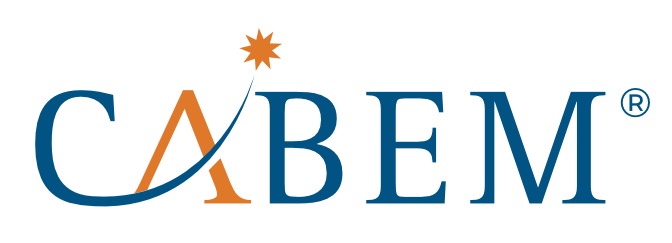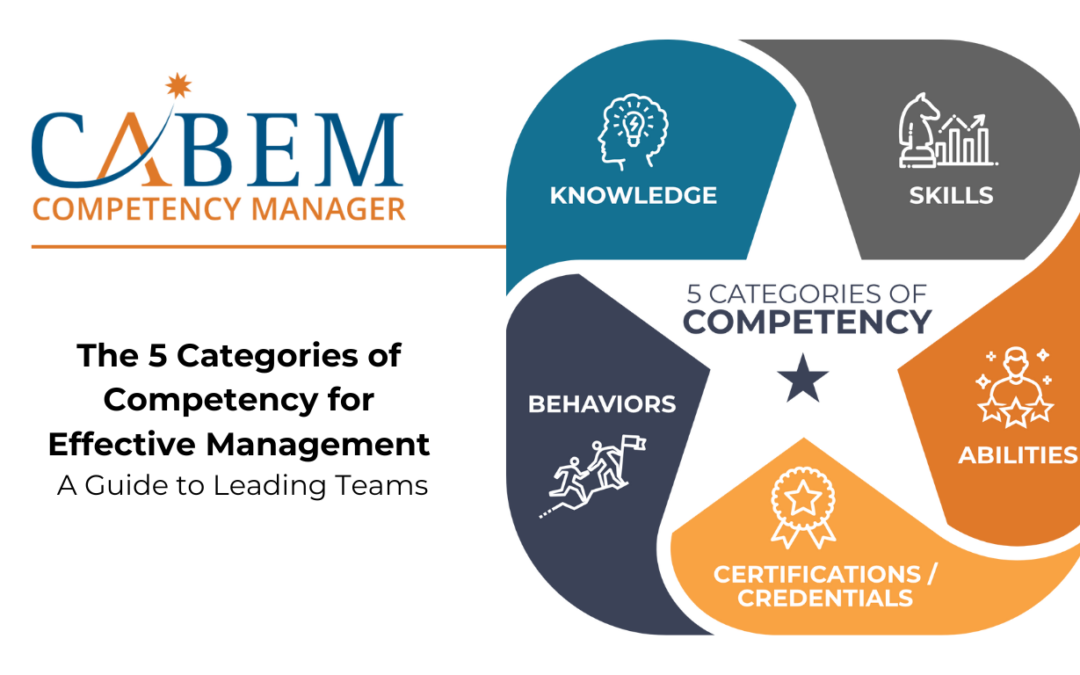A Guide to Leading Teams to Success with 5 Competency Categories
Effective management in today’s business environment requires more than overseeing daily operations. It demands various core competencies that enable managers to lead their teams successfully and drive organizational growth. Competency management software can be an invaluable tool in identifying, developing, and leveraging these competencies.
Competency can be defined as the combination of knowledge, skills, abilities, behaviors, and certifications required to perform a particular task, function, or role effectively. It encompasses both the theoretical understanding and the practical application of that knowledge in a given context. Competency implies proficiency or excellence in a specific area. It is often demonstrated through consistent and successful performance. This blog will explore the five core categories of competency: knowledge, skills, abilities, behaviors, and certification or credentials. Competency begins with behaviors and abilities. Let’s start there.
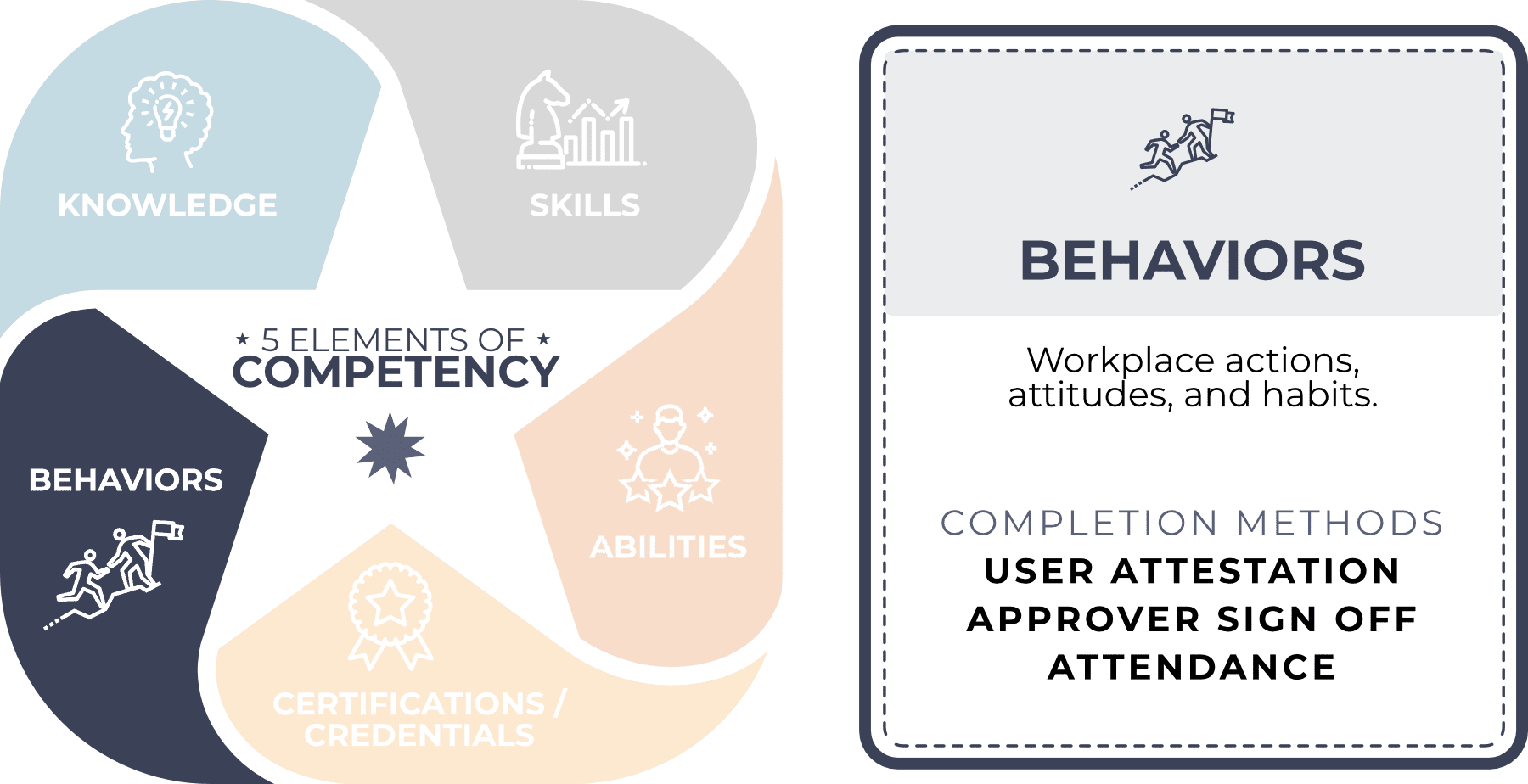
1. Behaviors: The Actions That Reflect Potential and Efficiency
Behavior is a fundamental aspect of human life. Patterns of actions, reactions, and activities exhibited by individuals or groups in response to their environment. It includes observable and measurable activities, ranging from simple reflexive actions like blinking or flinching to complex cognitive processes like problem-solving and decision-making.
Understanding these behaviors is important in the context of competency management. Competency management involves identifying, assessing, and developing the skills and abilities required for effective performance in various roles and situations. By analyzing behavior, organizations can gain insights into how individuals perform tasks, interact with others, and respond to challenges.
For example, supervisors or team leads can provide signoffs confirming worker’s demonstrated positive behaviors, such as punctuality, cooperation with team members, and adherence to safety standards. By monitoring and evaluating these behaviors, they can identify areas where employees excel and areas needing improvement. This information can then be used to tailor training programs, provide targeted feedback, and create development plans that enhance individual and team performance.
How To Demonstrate Behavior:
- Lead by example, exhibiting behaviors that reflect organizational values and a collaborative team environment.
- Provide regular feedback and recognition to team members.
- Use competency management software to monitor ongoing personal and professional development
Understanding behavior helps in predicting future performance and potential. It allows managers to make informed decisions about hiring, promotions, and succession planning by aligning individuals’ behavioral patterns with the desired competencies for specific roles. Integrating behavior analysis into competency management enables a more comprehensive and practical approach to developing a skilled and adaptable workforce.

2. Abilities: The Capacity for Performance
When integrating behavior analysis into competency management, abilities are intrinsically connected to observable behaviors. Abilities refer to the innate or developed skills and capacities individuals possess. This manifests through their actions and responses in various situations. For example, an employee’s ability to effectively communicate is demonstrated through their interactions with colleagues, clarity in conveying information, and responsiveness to feedback. Similarly, problem-solving abilities are evident through how individuals approach challenges, generate solutions, and implement strategies.
By systematically analyzing these observable behaviors, managers can accurately assess and develop the underlying abilities contributing to overall job performance. This connection between abilities and behaviors ensures a more precise and actionable framework for enhancing individual and organizational effectiveness. Managers with solid abilities can adapt to changing circumstances, handle complex situations, and maintain high performance levels.
How to Demonstrate Abilities:
- Showcase critical thinking by analyzing data and making sound decisions.
- Adapt to new challenges with agility and resilience.
- Demonstrate physical stamina and endurance when required by the role.
Management roles require inherent traits and qualities that contribute to success in leadership positions. For example, supervisors or mentors observe and evaluate the worker’s problem-solving abilities, attention to detail, and manual dexterity during their shifts.
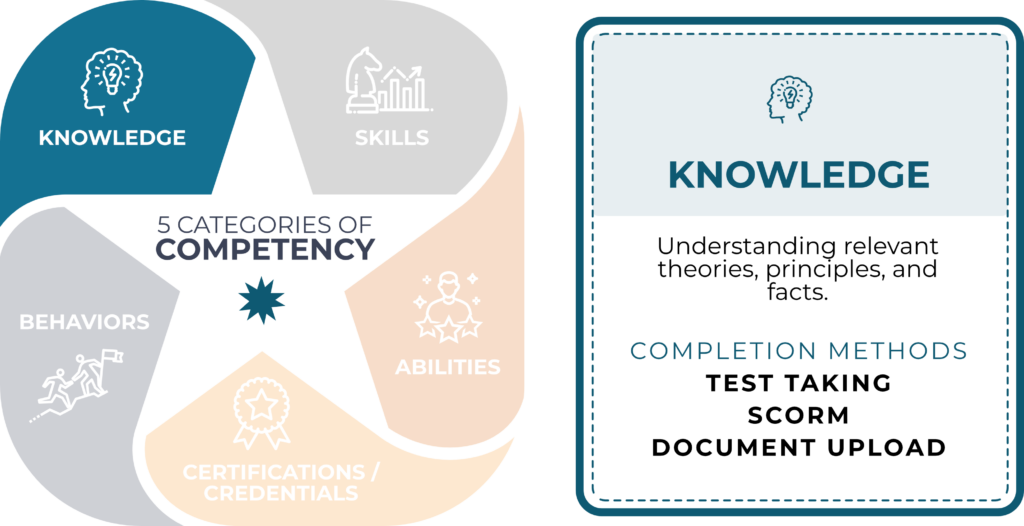
3. Knowledge: The Foundation of Expertise
Knowledge represents an individual’s theoretical understanding and information, forming the foundation upon which abilities are built and behaviors are executed. This knowledge influences behaviors as individuals apply their knowledge to real-world scenarios, demonstrating their competencies through observable actions and reactions. When behaviors are analyzed within the competency management framework, they provide tangible evidence of how well knowledge is integrated and abilities are utilized.
Knowledge forms the bedrock of effective management. It encompasses understanding industry trends, market dynamics, organizational policies, and the technical aspects relevant to one’s role. Managers with deep knowledge can make informed decisions, anticipate challenges, and develop strategic plans that align with organizational goals.
How to Demonstrate Knowledge:
- Stay updated with industry developments through continuous learning and professional development.
- Participate in industry conferences, webinars, and workshops.
- Share insights and knowledge with team members to foster a culture of continuous improvement.
Managers must understand fundamental principles, regulations, and best practices relevant to their industry and specific management areas. For example, understanding of business operations, financial management, and industry regulations through standardized tests or quizzes.
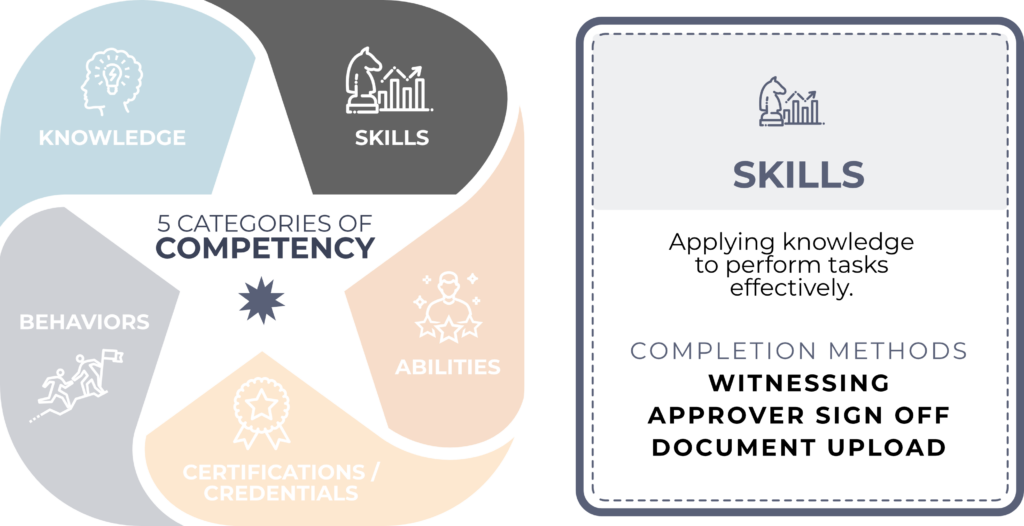
4. Skills: The Tools for Execution
Skills are the practical tools that managers use to implement their knowledge effectively. These include technical skills, such as proficiency with software and systems, and soft skills, like communication, problem-solving, and time management. Competency management software can help identify skill gaps and provide targeted training to enhance these critical areas.
The skills matrix has become a vital tool in any organization’s Competency Management Program for tracking employee skills, training, certification, and qualifications. It is a visual tool that identifies critical skills in specific roles and recognizes the competency level for each skill for individuals. An effective matrix can boost the skill and efficiency levels within a company.
How to Demonstrate Skills:
- Apply technical skills to streamline processes and improve efficiency.
- Use communication skills to convey ideas clearly and build strong relationships with team members.
- Employ problem-solving skills to navigate challenges and find innovative solutions.
Management roles often require diverse skills to lead teams and oversee operations effectively. For instance, conduct practical assessments where supervisors or qualified personnel observe the worker performing tasks like operating machinery, assembling products, or conducting quality checks.
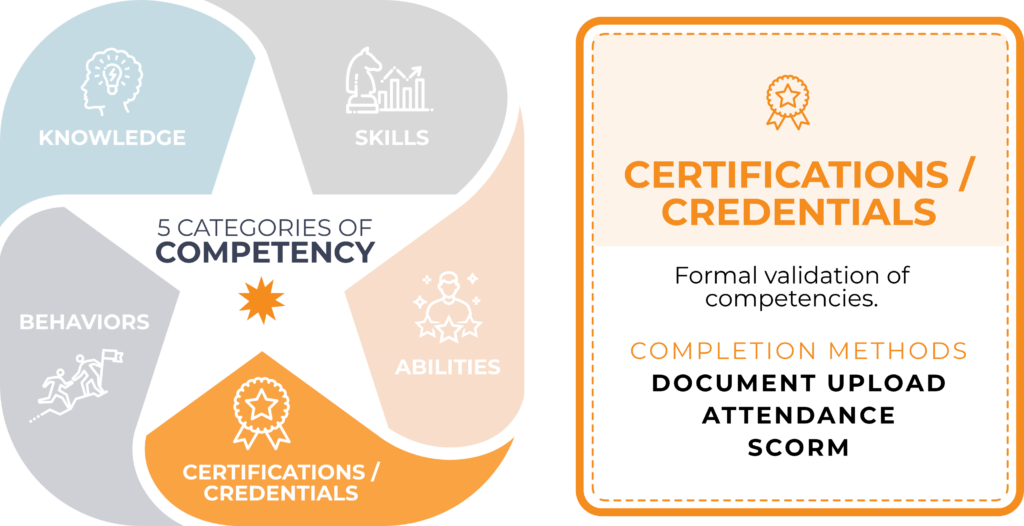
5. Certification or Credentials: The Validation of Expertise
Certifications and credentials formally recognize a manager’s expertise and commitment to professional growth. They validate a manager’s knowledge, skills, and abilities, enhancing their credibility and demonstrating their dedication to continuous improvement.
How to Demonstrate Certification or Credentials:
- Pursue relevant certifications in your industry to validate your expertise.
- Display certifications and credentials to inspire confidence in your leadership.
- Encourage team members to seek certifications and provide support for their professional development.
Obtaining industry-specific certifications or credentials can validate a manager’s competency and expertise in their field. For example, upload certificates, diplomas, or other credentials such as an MBA or Certified Manager (CM) that validate their expertise and commitment to continuous learning.
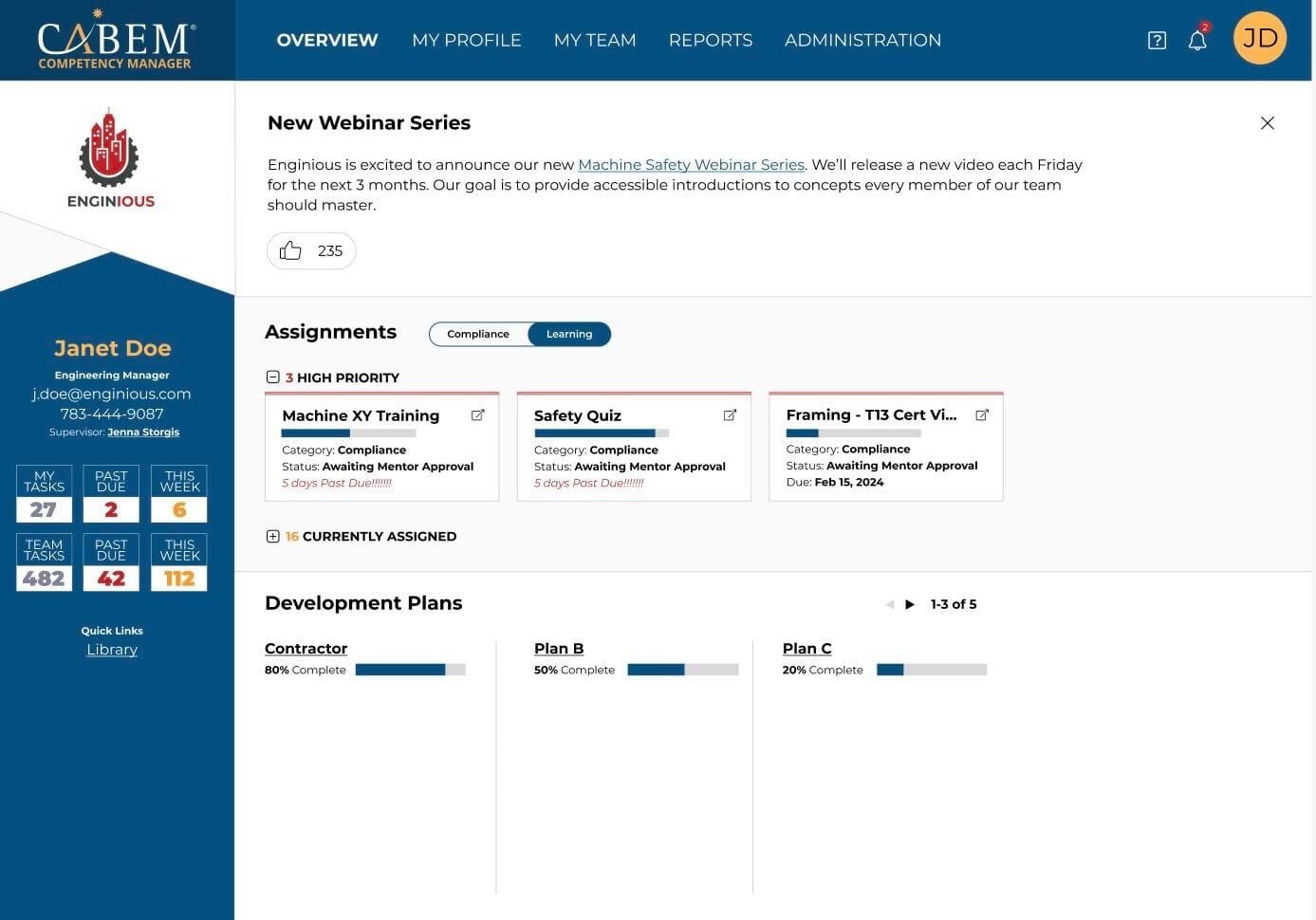
Competency Management Software Is an Invaluable Tool
Competency is not static. It evolves through learning, practice, and experience. Continuous development and improvement are essential to maintaining and enhancing competency in a rapidly changing environment. While all areas of competency are important, Prioritization of these competencies can vary depending on the specific requirements of different roles, industries, and contexts. Layering these competencies is important to build a well-rounded and adaptable workforce. Each component interplays with the others, creating a robust framework for employee development and organizational success.
By mastering and demonstrating these five core categories of competency—knowledge, skills, abilities, behaviors, and certifications or credentials—managers can effectively lead their teams and contribute to the success of their organizations across various industries. Competency management software is invaluable in this journey, helping managers identify strengths, address gaps, and continuously develop their capabilities. Embracing these categories ensures that managers are effective leaders and catalysts for organizational growth and innovation.
Everyone needs to accomplish many tasks and the skills to do so competently. At CABEM Technologies, our Competency Manager software helps bridge this gap by compiling and creating competencies logically that institutionalize enterprise employee knowledge. We found that many training plans operate within a vacuum and are not formulated from the top down to address the needs of the whole organization. Our system allows organizations to create competencies and map them to departments, roles, locations, and other segments across the enterprise. Contact us today to get started.
